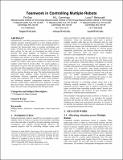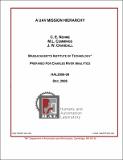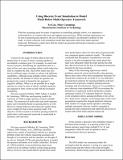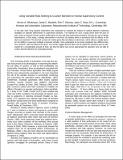Browsing HAL Reports by Title
Now showing items 65-69 of 69
-
Teamwork in controlling multiple robots
(ACM/IEEE, 2012)Simultaneously controlling increasing numbers of robots requires multiple operators working together as a team. Helping operators allocate attention among different robots and determining how to construct the human-robot ... -
A UAV Mission Hierarchy
(MIT Humans and Automation Laboratory, 2006)In the following sections, each of the primary missions are decomposed into mission planning, management, and replanning segments in order to identify what the primary functions a human operator will need to perform. The ... -
Unloved Aerial Vehicles: Gutting its UAV plan, the Air Force sets a course for irrelevance
(Armed Forces Journal, 2012-11)This month's cover article challenges Air Force leader on the subject of unmanned aerial vehicles. Lt. Col. Lawrence Spinetta and Missy Cummings see disaster, or at least a long-term slide into irrelevance, in recent ... -
Using Discrete Event Simulation to Model Multi-Robot Multi-Operator Teamwork
(Human Factors and Ergonomics Society, 2012-10)With the increasing need for teams of operators in controlling multiple robots, it is important to understand how to construct the team and support team processes. While running experiments can be time consuming and ... -
Using Variable-Rate Alerting to Counter Boredom in Human Supervisory Control
(HFES, 2012-10)A low task load, long duration experiment was conducted to evaluate the impact of cyclical attention switching strategies on operator performance in supervisory domains. The impetus for such a study stems from the lack ...





